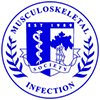Authors: Ketonis C, Aiyer A, Shapiro IM, Hickok NJ, Parvizi J, Adams CS
Title: Vancomycin-Modified Allografts Retain Osteoblastic Cell Biocompatibility
Institution: Thomas Jefferson University, Philadelphia PA
Purpose: We have previously described a vancomycin modified bone graft that resists colonization by bacteria and remains stable over time. In this study we investigate whether this modification affects biocompatibility.
Methods: Modification: Cortical human allograft was cut into 0.5cm squares, washed extensively and sequentially coupled: 2X with excess Fmoc-aminoethoxyethoxyacetate; deprotected with 20% piperidine in dimethylformamide; and incubated with vancomycin (four-fold, VAN) for 12-16 hours. The vancomycin-modified bone (VAN-bone) was washed extensively with DMF and incubated in PBS for >1 day before use. VAN immunofluorescence: Control or VAN-bone was washed 5X with PBS, blocked with 10% FBS (1hr), incubated with rabbit anti-VAN IgG (4?C, 12h) then AlexaFluor 488-coupled goat anti-rabbit IgG (1hr), and visualized by confocal microscopy. Cell culture: Control and VAN-bone squares were sterilized in 70%EtOH, washed 3x with DMEM/F12 and treated with UV radiation (10min). Human Fetal Osteoblasts (hFOBs) were seeded (150000 cells/ml) on the sterile bone squares. At 1 and 3 days, bone samples were moved to a fresh well and washed 3x with PBS. Attachment/Viability assay: At 1 and 3 day s following seeding, cells on the bone samples were stained (1hr) with BCECF-AM (which is converted to fluorescent BCECF in viable cells via the action of intracellular esterases), washed extensively with PBS and visualized using confocal microscopy. In parallel studies, stained cells were lysed with 1% Triton-X in PBS and the fluorescent supernatant was quantified using a Tecan plate reader. Cell Toxicity: At 1 and 3 days following seeding on control and VAN-bone squares, media was sampled and the Tox-7 Assay (Sigma Aldrich) was used to measure the amount of Lactate Dehyrogenase(LDH) released in the medium as an indication of cell integrity. LDH was then normalized to total cell numbers to assess cell toxicity. Scanning Electron Microscopy (SEM): hFOBS on control and VAN- bone squares were fixed with 4% Paraformaldehyde for 10 mins and dehydrated with an increasing concentration of ethanol and finally Freon. Samples were then gold-sputter coated and visualized using a Hitachi TM-1000 SEM.
Results: VAN coverage: Fluorescent imaging using anti-vancomycin staining revealed a uniformly bright signal on VAN-bone as compared to controls that showed no specific staining, indicating efficient modification of the modified bone squares with VAN. Cell attachment: By fluorescent staining, hFOBS readily attached and proliferated on the bone samples with no clear differences in overall morphology and distribution between VAN and control bone. Cell quantification: Measurements of the released BCECF dye from stained cells seeded on control and VAN-bone, resulted in no significant differences in fluorescent intensity indicating that similar numbers of viable cells colonized both surfaces 1 and 3 days after seeding. Cell toxicity: hFOBS proliferating on control and VAN-bone released similar amounts of LDH into the media over 3 days indicating that the toxicity of VAN-bone is equivalent to that of unmodified bone. SEM: Visualization by SEM revealed abundant hFOB attachment to and spreading on both control and VAN-bone surfaces; and normal cellular morphology was present, as evidenced by a fibroblastoid shape with thick protrusions addressing adjacent surfaces.
Discussion and Conclusion: Infection remains one of the most feared complications following bone grafting. Early after implantation, bone graft is essentially a foreign body with a surface topography that is ideal for bacterial colonization. Current techniques that address this issue, such as antibiotic loaded allografts, come with biocompatibility problems as well as the specter of due to the rapid elution kinetics. We have previously described vancomycin modification of allograft that renders the graft bactericidal and have shown that it significantly decreases bacterial colonization while remaining stable for long periods of time. We now extend this modification to cortical bone pieces and assess whether this technology has any impact on the ability of the bone to foster osteoblastic cell attachment and proliferation. We showed that osteoblasts are able to attach and proliferate to the same extent on control and VAN-bone, while toxicity assays show that the modification is not deleterious to cells. Visualization studies reveal normal cell morphology, attachment and spreading. Overall, VAN-bone appears to retain its biocompatibility while presenting a surface hostile to bacterial colonization.

